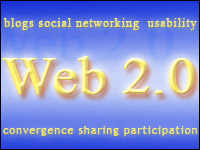
This story was originally published on Sept. 15, 2011, and is brought to you today as part of our Best of ECT News series.
Social CRM has been contemplated and debated, defined and refined, cussed and discussed. These many years of excited conversation about what SCRM could do for businesses and what businesses need to do to make it a reality have created more questions than answers for many companies.
That’s created an aura of complexity around SCRM. Sure, there are complex components to creating an SCRM strategy — how do you staff your SCRM efforts? How do you transition from listening to engaging in conversations, and which ones should you engage in? How do you get the results of those conversations into your CRM system?
Every business has to work through these and many other questions that relate to their internal processes. But in thinking about these complex issues, the tendency is to think of all of SCRM as complicated. In reality it’s not.
Here are some examples culled from IT Expo’s co-located Social CRM Expo. While it’s not big in terms of a physical presence at this telecom-heavy show, it is significant in the strength of its content — and in the number of times the speakers said simple things that made light bulbs go on over the audience’s heads.
No. 1: Go to Google
One of the great CRM questions is, “how do I find out where my customers are talking about me?” The big social media standard bearers — Facebook, Twitter and LinkedIn — are obvious first thoughts, but often customers congregate on smaller sites that are more narrowly focused on their vertical markets or their unique interests.
Discovering these rich niches of often-intense conversation could prove far more lucrative than relentlessly panning in the waters of Facebook or Twitter for a nugget of discussion about your business.
So how do you find these smaller, specialized channels? Do you need to throw significant cash at it? Is there a tool you can buy that will magically reveal these social media mother lodes?
You can surely blow a lot of dough on technology to find them, but before you do, Erin Korogodsky, social media quarterback at Lithium, has a suggestion: There’s this exotic technology called “Google” into which you can plug in the name of your company, the names of your competitors, or keywords that pertain to your business. It’ll return results for those terms and, with a little digging, it should reveal many of the significant smaller social media channels where people are talking about you.
No. 2: It’s Your Party
These days, online marketing pieces and company websites have lots of little Facebook, Twitter, LinkedIn and other social media icons strewn about their landscapes inviting customers to click on them to friend, connect or subscribe to them. It’s remarkably easy for designers to add them to their pages, and it’s also remarkably easy for marketing managers and other executives to tell designers to add them to their pages.
Unfortunately, it’s not quite so easy to recognize that when you plaster an icon on company content, you’re making a commitment to be part of the conversation — not just when the content is published, but for as long as that standing invitation is open to the public.
“If you’re going to tell people to follow you on Twitter or Facebook, then you’d better be there for them,” said Don Greco, director of contact center field marketing and sales systems engineering development for Siemens.
All too often, businesses make the invitation but then don’t hold up their ends — continuing to encourage people to join a conversation that they’ve left withering on the vine.
Don’t start inviting people to your Facebook or LinkedIn page or to follow you on Twitter unless you plan on having a real, ongoing presence there. And, for heaven’s sake, don’t invite them to a customer community of your creation if you don’t have a genuine commitment to maintaining and participating in that community.
Engaging haphazardly is worse than not engaging in the first place, because it asks the customer to do something and then fails to honor that action. Customers get the same level of non-communication, even though they have actively done something extra to get it.
No. 3: Control the Message
One of the terrifying things about social media is that it takes control of the company message away from designated spokespeople and distributes it around the company. Especially when people love their jobs, their blogs, tweets and status updates may be chock-full of information that the company may not want in the public sphere yet.
This isn’t happening because employees all over the world have decided to maliciously divulge important material or to sabotage marketing efforts, said Greg Gunn, vice president of business development at HootSuite. It’s happening because most companies don’t bother to educate their employees about how they should talk about the business on social media.
So tell them. Unless you include them in the company’s understanding of how social media should be used in discussing the business, don’t be surprised if they say things you don’t want them to say.
For example, for competitive reasons, it’s not OK for the engineers at a software company to blog about new, revolutionary features before they are announced. Do they know that? And do they know the date when the project they’re working on will be announced? If they do, then you could effectively multiply your marketing efforts, with your traditional marketing being supplemented by the blogs and tweets of your developers.
Here’s a non-technology example: Marketing creates a new, official name for an incentive program, but the sales department fails to get the word, and the socially active people in sales continue to use the old name, creating confusion among the customers and, ultimately, the impression that internal chaos reigns inside your business. Did sales get the memo — not just about the name change, but about how the program needed to be referred to in all circumstances, including on social media?
Companies need to realize that everyone in the business is potentially a source of company information in the social era. You must help them deliver a controlled and coherent message about your business, and that entails keeping everyone inside the company informed about marketing and messaging plans. It also means making them aware of the importance of bringing things they learn through their conversations back to the business when appropriate.
“Social CRM requires more sophisticated internal communications, not external,” said Gunn.
























































Social CRM
See all Social CRM